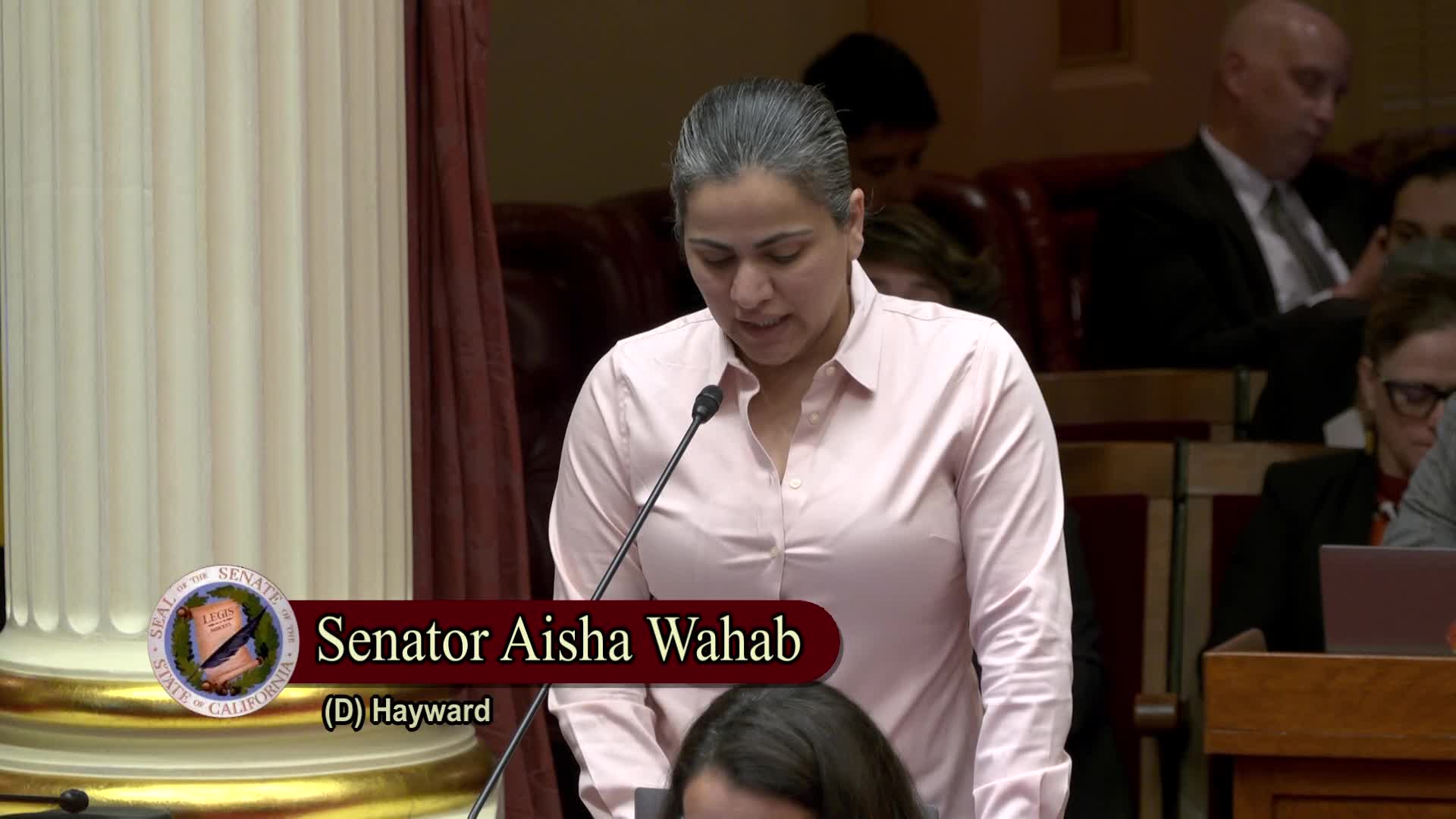California lawmakers advocate for foster youth support during May awareness month
May 15, 2025 | California State Senate, Senate, Legislative, California
This article was created by AI summarizing key points discussed. AI makes mistakes, so for full details and context, please refer to the video of the full meeting. Please report any errors so we can fix them. Report an error »

California lawmakers have taken a significant step towards improving the lives of foster youth by adopting Senate Resolution 10, which designates May as Foster Youth Awareness Month. This resolution highlights the urgent need for enhanced support and resources for the approximately 46,000 foster youth currently in the state’s care.
During the Senate Floor Session on May 15, 2025, several senators voiced their concerns about the challenges faced by foster youth, including high rates of homelessness, mental health issues, and educational disparities. Senator Wahab, a key proponent of the resolution, emphasized that foster youth often lack a stable foundation and safety net, making them vulnerable to a range of adverse outcomes, including incarceration and chronic health problems.
Statistics presented during the session revealed that less than 3% of foster youth obtain a college degree, and a staggering 50% of the homeless population identifies as former foster youth. These figures underscore the systemic failures that leave many young people without the necessary support to thrive. Senators called for a commitment to provide stable housing, access to education, and mental health services, stressing that early investment in these areas can lead to long-term benefits for both the individuals and society.
Senator Ashby highlighted the bipartisan efforts to make college debt-free for former foster youth, showcasing a commitment to creating pathways for success. However, concerns were raised about impending budget cuts that could jeopardize existing support systems for these vulnerable populations.
The resolution's adoption is a call to action for lawmakers to prioritize foster youth beyond their time in the system, extending support into their early adulthood. As the Senate moves forward, the emphasis will be on crafting policies that empower foster youth, ensuring they are not left behind as they transition into independent living.
The passage of SR 10 marks a pivotal moment in California's ongoing efforts to address the needs of foster youth, reinforcing the message that their future is intertwined with the well-being of the community as a whole.
During the Senate Floor Session on May 15, 2025, several senators voiced their concerns about the challenges faced by foster youth, including high rates of homelessness, mental health issues, and educational disparities. Senator Wahab, a key proponent of the resolution, emphasized that foster youth often lack a stable foundation and safety net, making them vulnerable to a range of adverse outcomes, including incarceration and chronic health problems.
Statistics presented during the session revealed that less than 3% of foster youth obtain a college degree, and a staggering 50% of the homeless population identifies as former foster youth. These figures underscore the systemic failures that leave many young people without the necessary support to thrive. Senators called for a commitment to provide stable housing, access to education, and mental health services, stressing that early investment in these areas can lead to long-term benefits for both the individuals and society.
Senator Ashby highlighted the bipartisan efforts to make college debt-free for former foster youth, showcasing a commitment to creating pathways for success. However, concerns were raised about impending budget cuts that could jeopardize existing support systems for these vulnerable populations.
The resolution's adoption is a call to action for lawmakers to prioritize foster youth beyond their time in the system, extending support into their early adulthood. As the Senate moves forward, the emphasis will be on crafting policies that empower foster youth, ensuring they are not left behind as they transition into independent living.
The passage of SR 10 marks a pivotal moment in California's ongoing efforts to address the needs of foster youth, reinforcing the message that their future is intertwined with the well-being of the community as a whole.
View full meeting
This article is based on a recent meeting—watch the full video and explore the complete transcript for deeper insights into the discussion.
View full meeting
